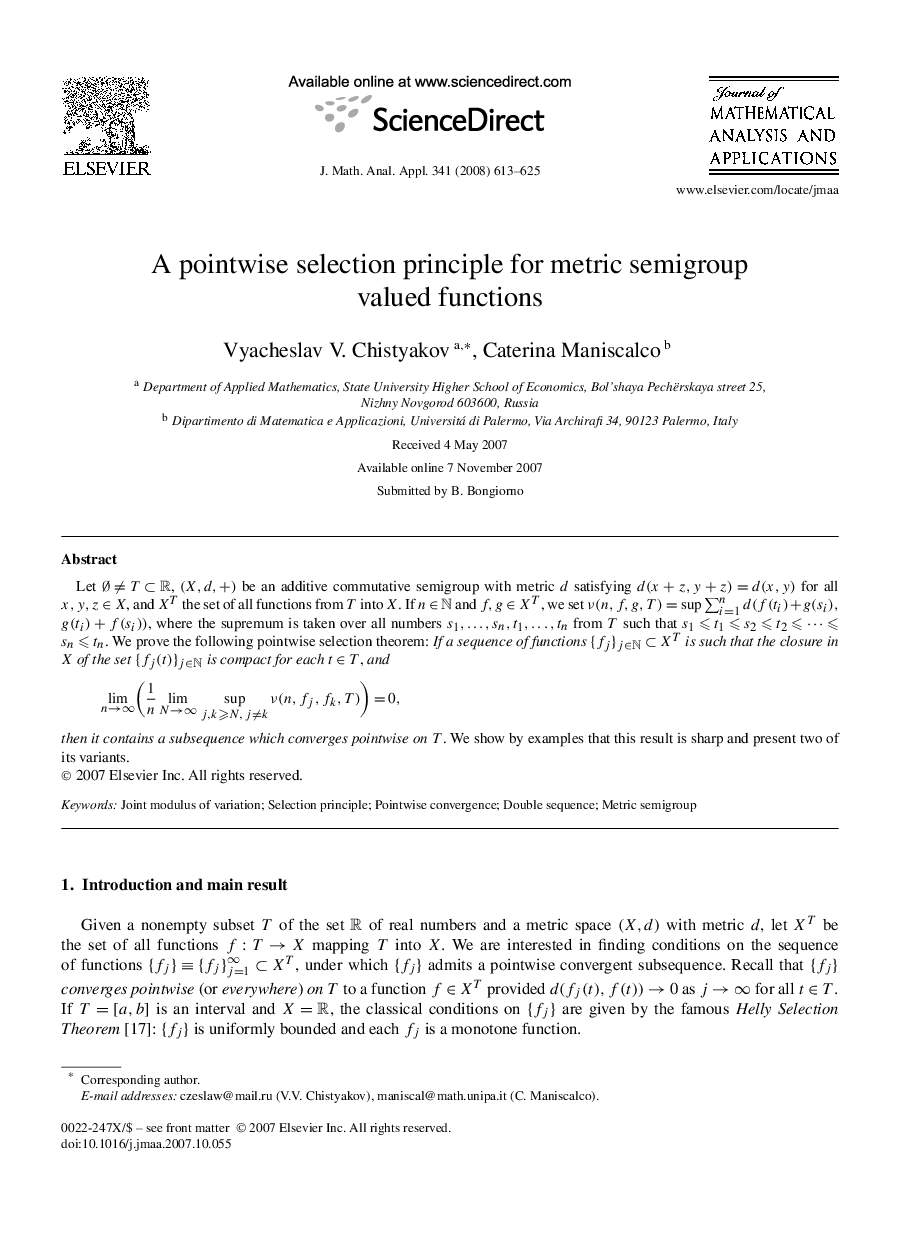| Article ID | Journal | Published Year | Pages | File Type |
|---|---|---|---|---|
| 4621505 | Journal of Mathematical Analysis and Applications | 2008 | 13 Pages |
Let ∅≠T⊂R∅≠T⊂R, (X,d,+)(X,d,+) be an additive commutative semigroup with metric d satisfying d(x+z,y+z)=d(x,y)d(x+z,y+z)=d(x,y) for all x,y,z∈Xx,y,z∈X, and XTXT the set of all functions from T into X . If n∈Nn∈N and f,g∈XTf,g∈XT, we set ν(n,f,g,T)=sup∑i=1nd(f(ti)+g(si),g(ti)+f(si)), where the supremum is taken over all numbers s1,…,sn,t1,…,tns1,…,sn,t1,…,tn from T such that s1⩽t1⩽s2⩽t2⩽⋯⩽sn⩽tns1⩽t1⩽s2⩽t2⩽⋯⩽sn⩽tn. We prove the following pointwise selection theorem: If a sequence of functions {fj}j∈N⊂XT{fj}j∈N⊂XTis such that the closure in X of the set {fj(t)}j∈N{fj(t)}j∈Nis compact for each t∈Tt∈T, andlimn→∞(1nlimN→∞supj,k⩾N,j≠kν(n,fj,fk,T))=0,then it contains a subsequence which converges pointwise on T. We show by examples that this result is sharp and present two of its variants.
